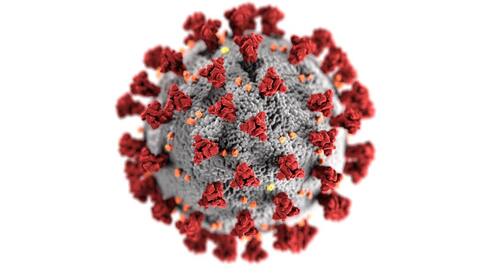Guidelines for Reopening 12-Step Meetings During COVID-19
Anurag Saraf, MD and Helen Shih, MD

For many individuals in recovery, 12-step programs are a vital component of maintenance. In-person meetings reinforce elements of fellowship, community, commitment, regularity, and mutual support that are associated with improved health and well-being. The current Coronavirus (COVID-19) pandemic has required physical distancing and the need to adapt to virtual technology to continue to hold group meetings. As the peaks of the pandemic passes, safe measures to resume in-person meetings are being considered.
Here, as advocates of 12-step meetings and as health care providers on the front lines with up-to-date knowledge of current medical and societal guidelines for safe physical distancing and personal protection, we provide some considerations and recommendations from our personal viewpoints.
Here, as advocates of 12-step meetings and as health care providers on the front lines with up-to-date knowledge of current medical and societal guidelines for safe physical distancing and personal protection, we provide some considerations and recommendations from our personal viewpoints.
Some factors specific to subpopulations of persons in recovery to be considered prior to loosening current physical distancing restrictions:
- High-risk population: Individuals in recovery tend to have other physical health conditions that could leave them at high risk of medical complications from COVID-19 if contracted. Common diagnoses include alcohol liver disease, hepatitis, heart disease, lung disease, kidney disease, malnutrition, cancer, advanced diabetes, among others.
- Frequent, large congregations: Individuals of 12-step fellowships often congregate in other large group settings. Individuals typically frequent group homes, recovery houses, donation centers, and homeless shelters. Large gatherings create high risk for large asymptomatic spread of infection.
Strategies for fellowships to consider regarding reopening of in-person 12-step meetings are provided. These are general strategies and should be individualized to each group’s needs in conjunction with their local guidelines:
- Minimize risk to high-risk individuals: Advise individuals who are symptomatic or positive for COVID-19 to stay at home; invite individuals who are at high-risk for complications to participate from home through a virtual video platform. Discuss communication strategies in advance and greeters at the door to communicate with members prior to the meeting.
- Continue virtual gatherings: Allow those who continue to benefit from home to have a venue to do so for as long as beneficial.
- Practice good hygiene: Have hand sanitizer readily available. Encourage individuals to wear masks during the meeting. Ask individuals to bring their own books. Disinfect cleaning of all tables, chairs, doorknobs, kitchen supplies, or other high contact surfaces at the beginning and end of the meeting. Consider donations for individuals that cannot afford their own supplies. Meetings can be held outside if feasible in order to minimize spread of infection.
- Continue physical distancing: Avoid physical contact such as hand shakes and hugs. Position chairs six feet apart and, if feasible, organize into smaller meeting groups. Consider meeting outside if weather and light are conducive to gathering.
Groups should discuss best practices to balance helping those who are seeking help with minimizing risk of spreading infection. If groups do not feel they can reliably adhere to safety measures, they should continue deferring in-person meetings until a time when they can meet safety measures for all group participants. To find more information:
Lastly, many persons in recovery are asking how long the “new normal” will continue. While our recommendations are applicable to guide general 12-step meetings, final decisions should be compliant with local and state mandates. Where there is ease on restrictions, we encourage members to weigh the benefits of in-person fellowship meetings with the risks of individual and community public health. Safe practices today remain the foremost priority to enable spreading the message and supporting long-term recovery.
- Touch base with venue organizers (ex. Church, community center) to ask their guidelines
- Continue to monitor local and state guidelines
- Keep in touch with individuals by phone or video and remain flexible to the needs of home group individuals. Consider frequent group conscience/business meetings to address details during the transition period.
Lastly, many persons in recovery are asking how long the “new normal” will continue. While our recommendations are applicable to guide general 12-step meetings, final decisions should be compliant with local and state mandates. Where there is ease on restrictions, we encourage members to weigh the benefits of in-person fellowship meetings with the risks of individual and community public health. Safe practices today remain the foremost priority to enable spreading the message and supporting long-term recovery.



